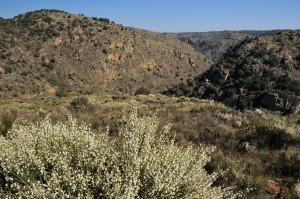Rewilding can be the best option for land-use in cases of farmland abandonment in Europe and all over the world when the social structure of farming communities has been eroded and low-intensity farming is no longer socially or economically viable. In some areas maintaining a moderate level of agricultural disturbance can maximize species richness with benefits for biodiversity. But both strategies cannot be successfully implemented without intervention and right management.

This is the main conclusion of Cibele Queiroz in her PhD dissertation in sustainability science “Managing for biodiversity and ecosystem services in a context of farmland abandonment” (2013), at the Stockholm Resilience Centre. She analyses the impacts of different management options in landscapes undergoing farmland abandonment. The process of farmland abandonment is happening in several parts of the world, particularly in European mountain areas.
By combining insights from a case study in Serra da Peneda, a mountain rural landscape in Portugal, combined with a global overview on scientific studies, Queiroz finds out that the abandonment impacts on biodiversity were reported in contrasting ways across world regions. In Europe and Asia, the negative impacts of abandonment on biodiversity associated with traditional farming practices were often highlighted, unregard of the potential benefits abandoned landscapes could bring to forest habitats. In contrast, in North and South America, abandonment trends were generally seen as an opportunity, rather than a threat, despite that the conservation of traditional farming systems here is also associated with biodiversity and cultural value.
Rewilding is a fourth option of land management policy – in addition to agricultural intensification, extensification and afforestation – proposed by Laetitia M. Navarro and Henrique M. Pereira in one of the first scientific papers on rewilding and land abandonment in Europe, published in September 2012. The authors identify species that could benefit from land abandonment and forest regeneration and the ecosystem services that could be provided such as carbon sequestration and recreation. They analyse the challenges associated with rewilding, including the need to maintain open areas, the fire risks, and the conflicts between people and wildlife. “Despite these challenges, we argue that rewilding should be recognized by policy-makers as one of the possible land management options in Europe, particularly in marginal areas”, Navarro and Pereira state.
In 2010, a report on farmland abandonment in the EU done by the Institute for European Environmental Policy (IEEP) stated that in the last decades substantial areas of the EU have been affected by abandonment. And a mid-range estimate shows abandonment up to an amount of 168,000 km2 of land by 2030.
